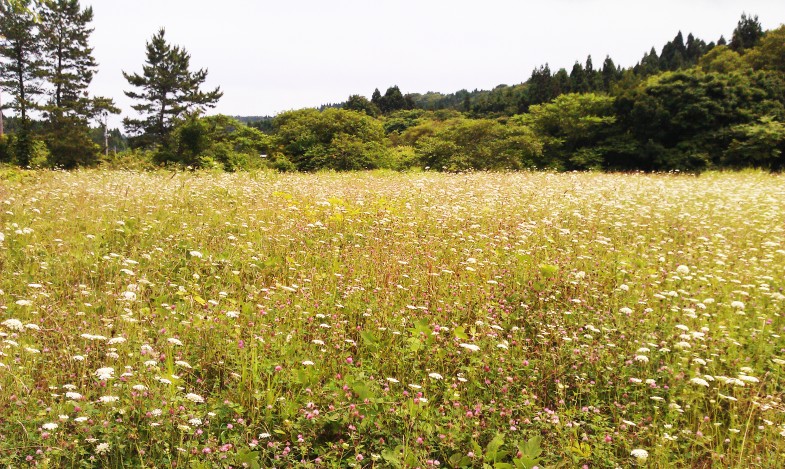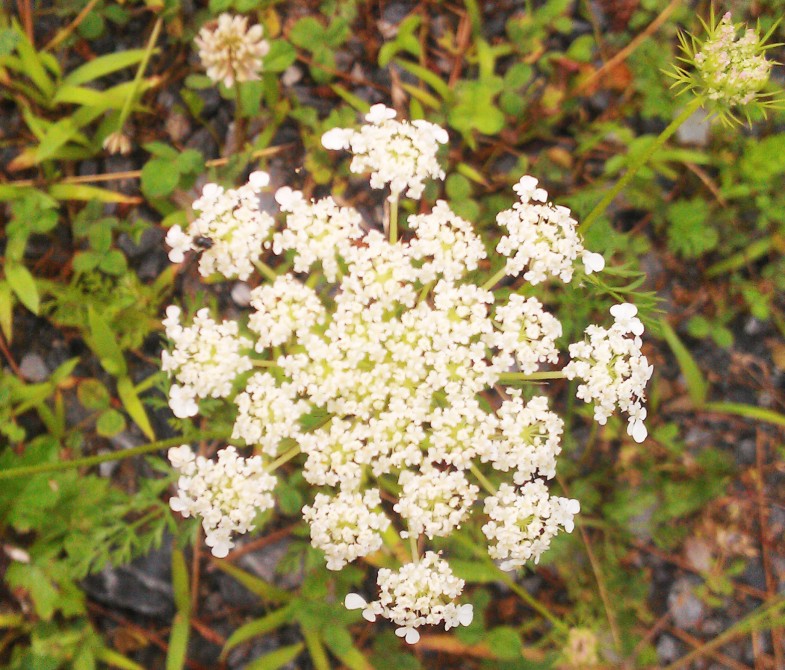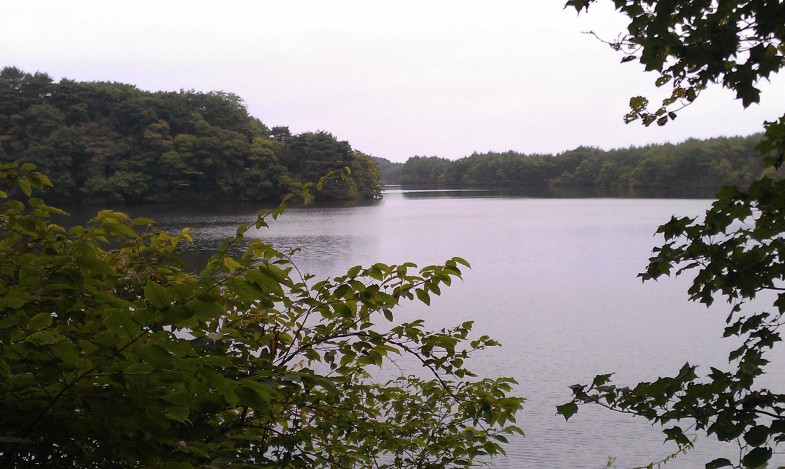
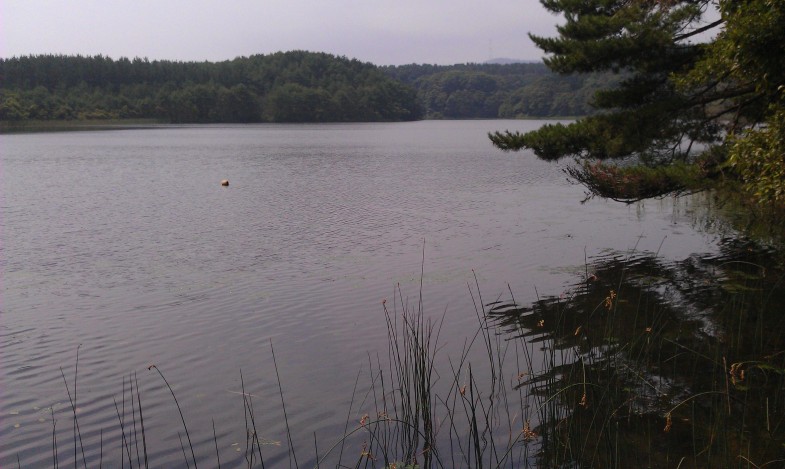
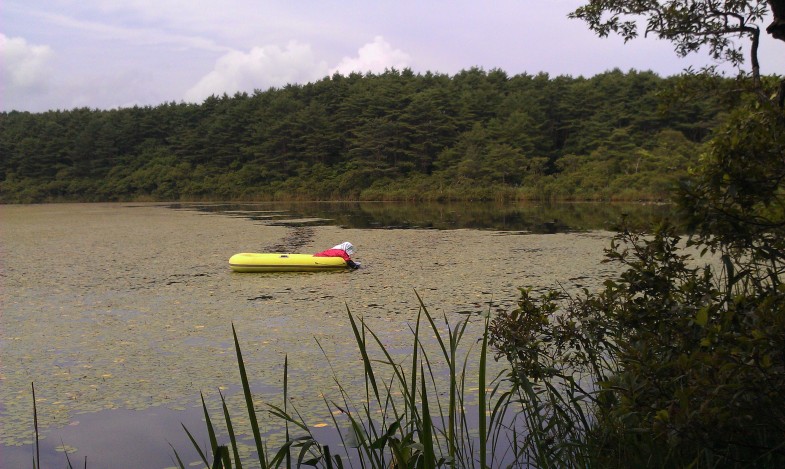
「砂丘湖」とは砂浜が風などによって起伏を作り、窪みに川が流れ込むなどして自然にできた淡水の沼である(新潟県佐潟など。海流や波によって海中の砂が堤防のように盛り上がり出口を塞ぐ、サロマ湖や八郎潟など汽水湖とは出来方も異なる)。砂丘湖自体も世界的に失われつつある貴重な存在だが、生物的にも貴重な環境を作っている。
Sand dune lake is a natural freshwater pond in a sandhill. It was shaped by wind. The wind had been carring sand and formed ups and downs, and then water stream into hollow places. It is not only very valuable existence itself in the world but also it gives important environment for biodeversity that’s being lost.
東通村には、大小多くの「砂丘湖」がある(名前がついている沼だけでも13ある)。東通村・猿が森の砂丘・後背湿地は日本の重要湿地500に選定されている(実は下北半島のほとんどの部分がこの選定を受けていると言ってよい)。この猿が森砂丘(幅1~2km、総延長17km)と少し内陸に入り込んだ砂丘を合わせた「下北砂丘」は、ほとんど知られていないが実は日本最大の砂丘であるという。知られていない理由は、砂丘の周辺を防風・防砂林が囲み、人の目に触れにくいことと、大部分を防衛省などが弾道試験場等に使用し、立ち入りを禁じているためである。
There are many dune lakes in Higashi-dori village. Named lakes are minimum 13s. Salugamori sandhill (1~2 km width, 17 km length) include the rear wetland in this village has selected one of 500 of the important wetland of Japan (Actually most of Shimokita peninsula is selected also). Additionaly, Shimokita sandhill (includ this Salugamori sandhill with the next ones) is really the biggest one in Japan. However almost all japanese don’t know of it. One of the reason is that this place is hidden from the roads by pine grove for protect the wind and the sand. The other one, here is off limited, because this ares has been useing for test site of trajectory of Ministry of Defence (MD).
砂丘湖自体は防衛省区域の外側にあり、一部はほそぼそと漁業利用などもされているようだ。しかし防風・防砂用の松林も大きくなり、沼に通じる道の多くは消えかけている。人口減と高齢化はここでも進み、学術的な調査なども今は行われていない。
These are out of the area of MD. A few lakes of it look as useing fishery sometimes but not often. Most of the roads to go there is being lost by growing thickly weeds and pine grove. Creasing depopulation and ageing there. Academic reserch stopped now.
写真は上から(北から南に並べてある)、大沼、左京沼、荒沼。大きさも深さも少しずつ異なるがいずれも自然のままだ。大沼はテナガエビ、左京沼はヒメマリモ(Aegagropila Linnaei)で有名だが、調査がされていない現在ではどうなっているだろうか。荒沼は水深1~2m、ジュンサイ(Brasenia schreberi)を採っているところである。
Photo:(above) O-numa. Small river prawn lives in. (midlle) Sakyo-numa. Sakyo-numa is famous for “Hime-malimo” (small moss ball), but how is it now? (bottom) An old woman was picking “Jun-sai” (the water shield) from the water at lake Ala-numa. ※numa means lake or pond. All of dune lakes are Nature.
